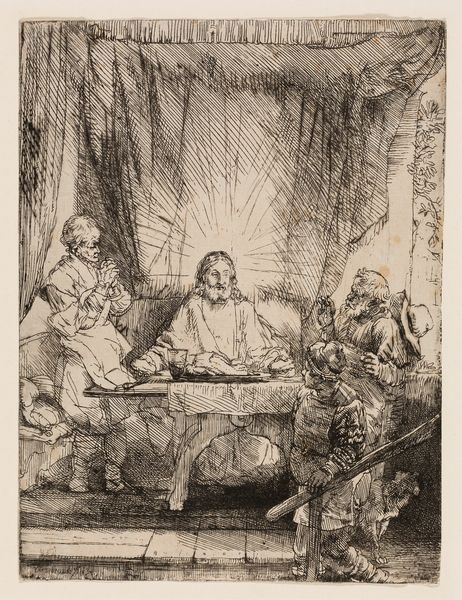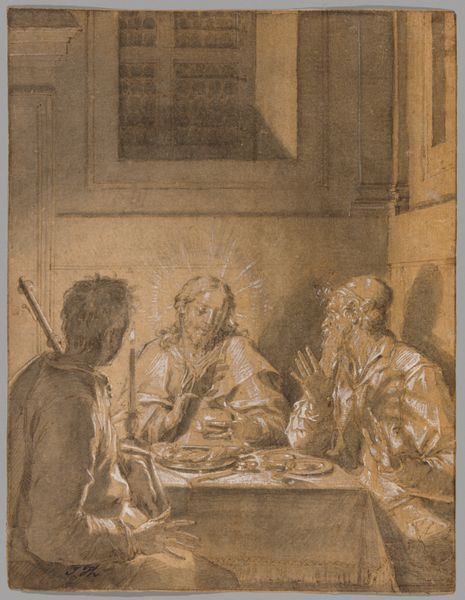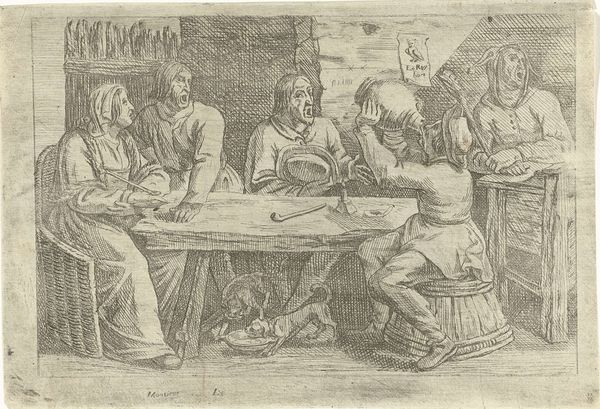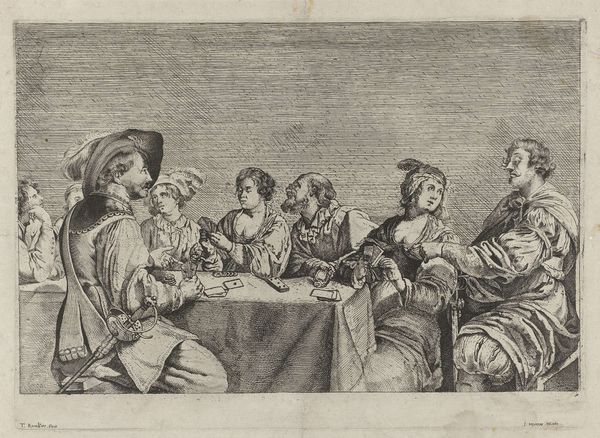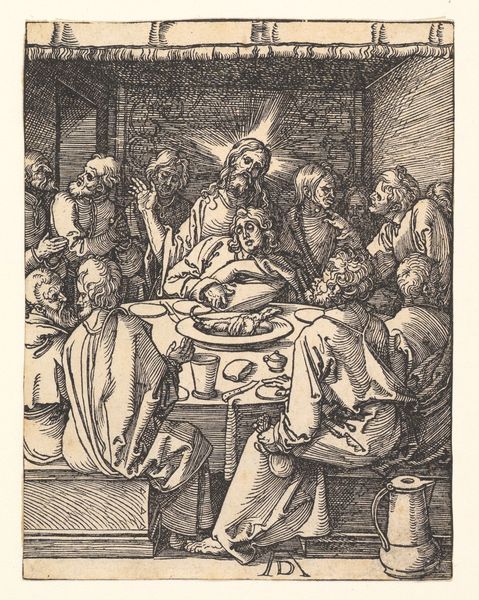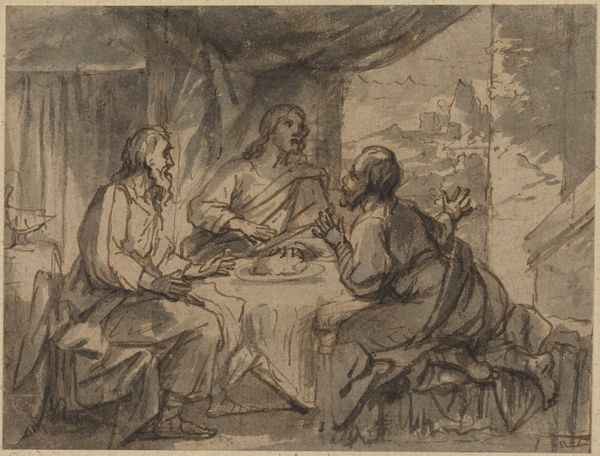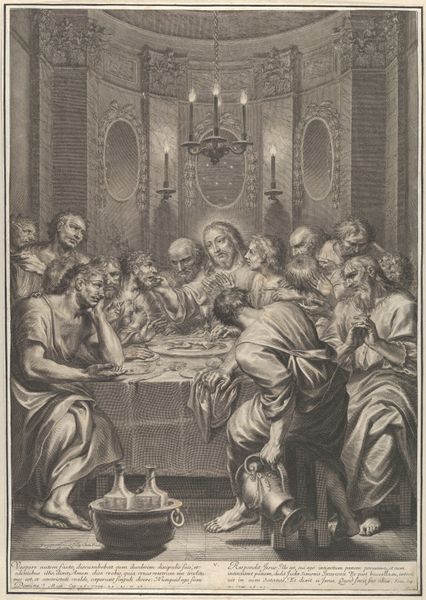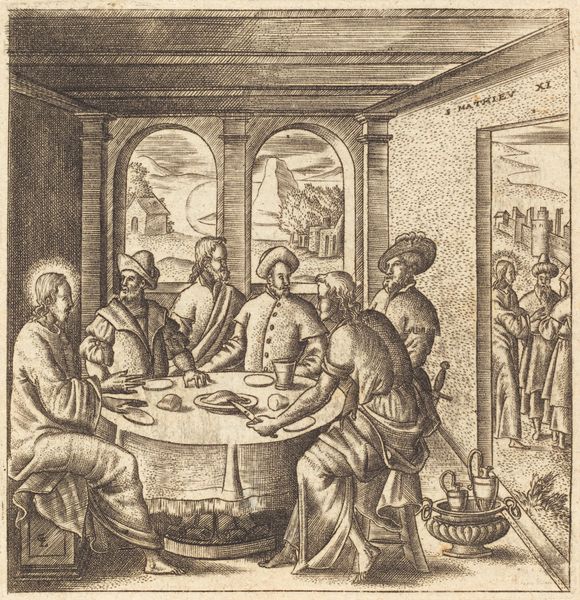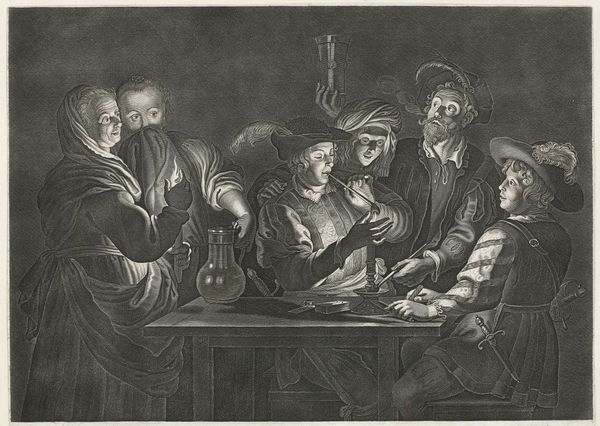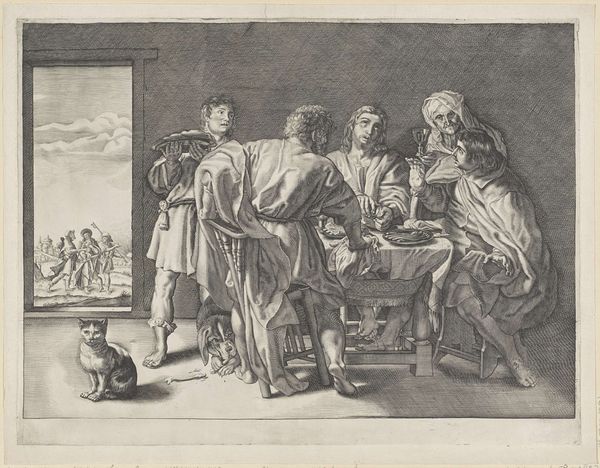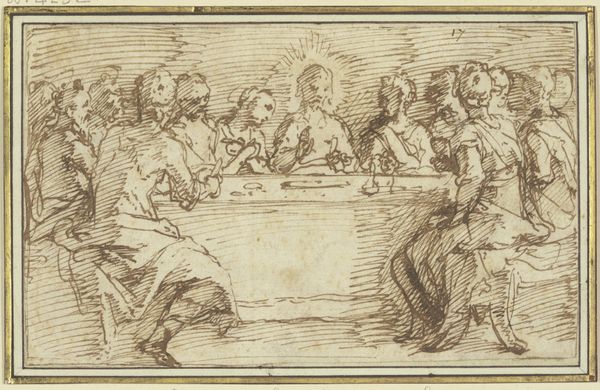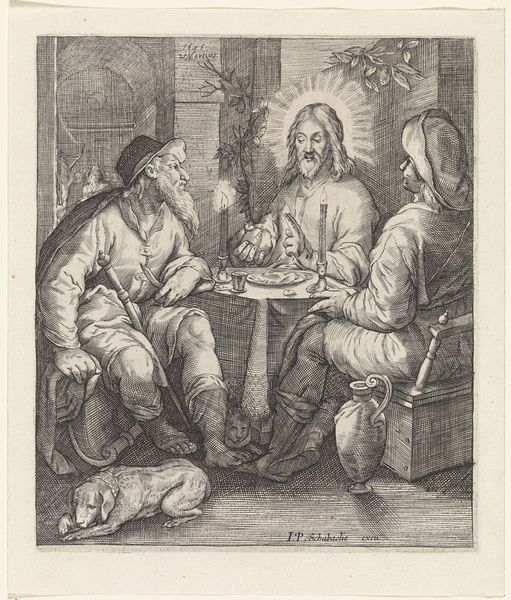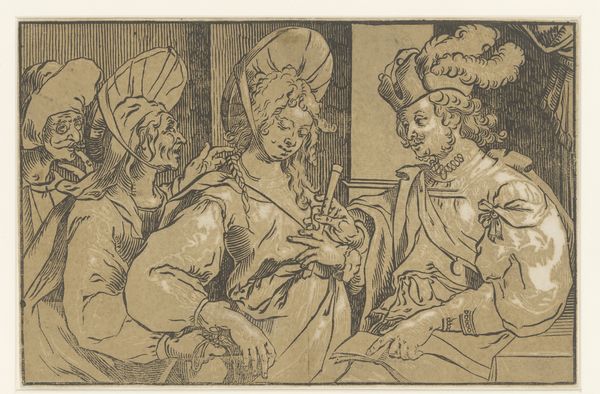
print, etching
#
narrative-art
#
baroque
# print
#
etching
#
figuration
#
history-painting
Dimensions: height 205 mm, width 302 mm
Copyright: Rijks Museum: Open Domain
Editor: So, this is “Emmaüsgangers,” an etching by Pierre Fatoure from sometime between 1594 and 1629. It has a sombre tone to it, and I find the characters mysterious. How do you interpret this work, considering its historical context? Curator: This print depicts the story of the Road to Emmaus. To fully appreciate Fatoure's “Emmaüsgangers”, we need to delve into the sociopolitical dynamics of its time, steeped in religious upheaval following the Reformation. Consider how this narrative would have resonated with audiences navigating shifting religious landscapes. Notice that Jesus is at the center of the composition, and he has an important function to show to these two men. Do you notice that they are both elderly? Editor: Yes, I see that. And how does that detail about the older characters impact how we view this artwork through contemporary lenses? Curator: Think about how representation shapes our understanding of power, and also our perception of time, change, identity, loss. Fatoure emphasizes the role of mentorship in spirituality, perhaps alluding to larger sociopolitical contexts by elevating the marginalized. Editor: That's a very different perspective than what I initially had in mind. I didn’t think about this as political mentorship at all, rather focusing on more personal understanding. Curator: Precisely! Art invites these multifaceted dialogues. It challenges us to connect seemingly disparate dots to uncover deeper truths about ourselves and the world we inhabit, then and now. What will you remember about Fatoure’s themes? Editor: I will not forget that in its narrative, it also embodies an important social and cultural context. Thanks, that makes the experience far more engaging.
Comments
No comments
Be the first to comment and join the conversation on the ultimate creative platform.
